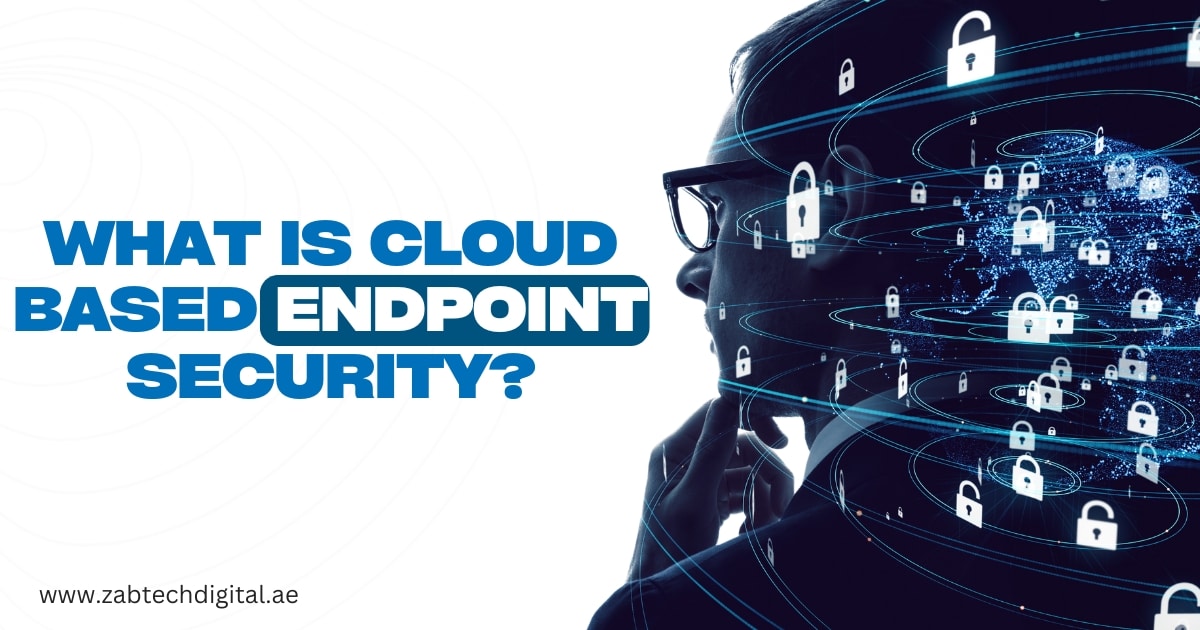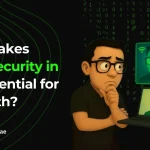
In an age where our digital lives are more interconnected than ever, the security of our endpoints is paramount. Imagine your laptop, smartphone, and even IoT devices as gateways to sensitive information—each one a potential target for cyber threats lurking in the shadows. Enter cloud-based endpoint security: a robust solution designed not only to protect these access points but also to enhance flexibility and efficiency in managing risks across diverse environments. In this comprehensive guide, we’ll breakdown cloud-based endpoint security, exploring its benefits, essential features, and how it stands at the forefront of modern cybersecurity strategies. Whether you’re a seasoned IT professional or just starting your journey into the world of cybersecurity, buckle up as we unveil everything you need to know about safeguarding your digital assets in the cloud!
Introduction to Cloud Based Endpoint Security
Business’ reliance on technology has increased in the last few decades. It’s critical now more than ever to implement robust security measures. Enter cloud-based endpoint security—a game changer in the fight against cyber threats. With devices becoming more interconnected than ever before, ensuring that each endpoint is secure is essential to protecting sensitive data and maintaining operational integrity.
Imagine a world where your organization can swiftly respond to potential threats while enjoying the flexibility and scalability that cloud solutions offer. That’s precisely what cloud-based endpoint security brings to the table: an advanced solution designed to safeguard every device connected to your network, whether it’s a laptop in a coffee shop or a smartphone on a subway.
This guide will delve into everything you need to know about cloud-based endpoint security—from its core definition and benefits over traditional methods, all the way through implementation strategies and best practices. If you’re looking for ways to enhance your organization’s cybersecurity posture while adapting seamlessly to modern challenges, you’ve landed in the right spot!
What is Endpoint Security?
Endpoint security is a digital system aimed at protecting devices that connect to a network. This includes laptops, desktops, smartphones, and even IoT devices. With the rise in remote work and mobile device usage, endpoints have become prime targets for cyberattacks. Each device represents a potential entry point for malicious actors wanting access to sensitive data. The primary goal of endpoint security is to safeguard these devices from threats like malware, ransomware, and phishing attacks. It involves deploying various techniques such as antivirus software, firewalls, and intrusion detection systems. Additionally, effective endpoint protection requires constant monitoring and management. Organizations must stay vigilant against emerging threats while ensuring all connected endpoints are secure at all times. Thus, it’s critical for businesses of all sizes to prioritize their endpoint security strategy in today’s digital landscape.
Traditional vs. Cloud Based Endpoint Security
- Traditional endpoint security relies heavily on on-premises solutions. This means that organizations must install software and manage updates locally. While this approach offers some control, it can lead to significant challenges in scalability and resource allocation.
- Cloud-based endpoint security flips the script. Providing a centralized work platform which can be accessed from anywhere with an reliable internet connection. Organizations benefit from real-time threat detection and automatic updates without the need for extensive hardware investments.
- Traditional methods often struggle with remote workforces. Employees accessing company data from various locations can create vulnerabilities. Cloud solutions are designed to secure endpoints across diverse environments seamlessly.
- Maintenance demands differ significantly between the two models. Traditional systems require ongoing IT support for troubleshooting and upgrades, while cloud-based systems streamline these processes through automated features, freeing up resources for other priorities.
Benefits of Cloud Based Endpoint Security
- Organizations can easily adjust their security measures as they grow, accommodating new devices without heavy investments in infrastructure.
- Cost-effectiveness. With cloud solutions, companies often reduce hardware costs and maintenance fees associated with traditional systems. This allows them to allocate resources to other critical areas.
- Cloud-based systems enable remote management and monitoring from anywhere, ensuring that teams can respond swiftly to threats regardless of their location.
- Real-time updates. Automated patches and upgrades keep security protocols up-to-date against emerging threats, minimizing vulnerabilities and enhancing protection levels.
- These systems simplify compliance reporting by centralizing data collection and analysis, making it easier for organizations to adhere to regulatory standards while maintaining robust cybersecurity defenses.
Features and Capabilities of Cloud Based Endpoint Security
- Real-time threat detection. Cloud-based endpoint security offers a robust suite of features designed to protect sensitive data across various devices. One standout capability is the real-time threat detection, which continuously monitors user activity and network traffic for suspicious behavior.
- Another critical feature is automatic updates. This ensures that all endpoints have the latest security patches without manual intervention, reducing vulnerability windows significantly.
- Integration with advanced analytics tools allows organizations to leverage machine learning for predictive analysis, identifying potential threats before they manifest.
- Centralized management dashboards provide visibility into all endpoints from a single interface. Administrators can quickly respond to incidents and enforce policies effectively across dispersed networks.
- Multi-factor authentication adds an extra layer of protection, ensuring only authorized users gain access to systems. These capabilities work together seamlessly to create a fortified environment against evolving cyber threats.
Implementation and Deployment Process
Implementing cloud-based endpoint security requires careful planning and execution.
- Assess your organization’s specific needs. Understand the types of devices in use, including laptops, desktops, and mobile devices.
- Choose a reliable provider that aligns with your requirements. Look for features such as real-time monitoring and threat detection capabilities. This step is crucial for ensuring comprehensive coverage across all endpoints.
- Initiate deployment strategically. Begin with a pilot program to test functionality within a small group before rolling it out company-wide.
- Training staff on new protocols is vital during this phase. Ensure everyone understands how to interact with the system effectively.
- Continuously monitor performance post-deployment. Regular updates and assessments help maintain optimal security levels while adapting to evolving threats in today’s digital landscape.
Common Challenges and Solutions
Implementing cloud-based endpoint security comes with its own set of challenges.
- Integration with existing systems. Organizations may face compatibility problems that hinder smooth operation.
- Data privacy concerns. Companies worry about storing sensitive information in the cloud, fearing it might be vulnerable to breaches. Addressing these anxieties requires clear communication about encryption and compliance measures.
- User training. Employees may not fully understand new protocols or tools, leading to ineffective utilization of the system.
To combat these issues, organizations should prioritize robust planning and thorough testing during deployment phases. Regular training sessions can help staff adapt seamlessly to changes. Partnering with reputable vendors also ensures reliable support for troubleshooting any emerging concerns effectively while maintaining confidence in security measures.
Best Practices for Managing Cloud Based Endpoint Security
- Prioritize Updates. To effectively manage cloud-based endpoint security, organizations should prioritize regular updates. Keeping software current protects against newly discovered vulnerabilities.
- Establish a robust policy for user access. Limit permissions based on roles to prevent unauthorized data exposure.
- Continuous monitoring is essential. Use advanced analytics tools to identify unusual behavior and respond swiftly to threats.
- Educate employees about cybersecurity risks and best practices. A well-informed team can be the first line of defense against potential attacks.
- Integrate automated responses to common threats. This not only speeds up reaction times but also allows IT teams to focus on more complex issues.
- Conduct frequent assessments of your endpoint security posture. Regularly reviewing configurations and performance ensures that defenses remain strong in an evolving threat landscape.
Future of Cloud Based Endpoint Security
- The landscape of cloud-based endpoint security is rapidly evolving. As cyber threats become more sophisticated, organizations are seeking advanced solutions that adapt seamlessly to changing environments.
- The evolution of Artificial intelligence and machine learning play pivotal role in the development of clod-based security. These technologies can analyze vast amounts of data in real time, allowing for quicker threat detection and response.
- The rise of remote work underscores the need for robust security measures. With employees accessing corporate resources from various locations, cloud-based systems provide flexibility while maintaining strong protective layers.
- Integration with other security platforms will also be a focal point. A holistic approach ensures better visibility across all endpoints, enhancing overall cybersecurity posture.
- As regulatory frameworks evolve worldwide, compliance will drive innovation in cloud-based endpoint solutions. Companies must remain proactive to stay ahead of potential vulnerabilities while harnessing the benefits of the cloud.
Recommendation:
ZabTech supports you with over 30 years of training experience, and further assists with IT services, digital marketing, ICT, cybersecurity, and mobile app solutions across the UAE.
To know more about IT services, digital marketing services, ICT solutions, Cyber security solutions and mobile apps, please Contact Zabtech IT Solutions,
Zabtech offers Unified Endpoint Management Services in Dubai,
For further information please contact:
WhatsApp number: +971 506963432
Email: support@zabtechdigital.ae
Website: https://zabtechdigital.ae/
Facebook: https://www.facebook.com/ZABTechITSolution
LinkedIn: https://www.linkedin.com/company/zabtech-it-solutions/
Twitter: https://twitter.com/Zabtech_Digital
Instagram: https://www.instagram.com/zabtechitsolutions/
To know more about Unified Endpoint Management Services in Dubai,
Conclusion:
The landscape of cybersecurity is evolving rapidly. As organizations increasingly adopt remote work models, securing endpoints has never been more critical. Cloud-based endpoint security provides a flexible and scalable solution that adapts to the ever-changing threat environment.
By leveraging cloud technology, businesses can enhance their security posture without the complexity associated with traditional systems. This transition not only simplifies management but also enables quicker responses to emerging threats.
Adopting cloud-based endpoint security is no longer a luxury; it’s a necessity for companies looking to protect sensitive data and maintain operational integrity in today’s digital world. Embracing this approach ensures that your organization stays ahead of potential risks while fostering an agile response mechanism against cyber threats. The future of cybersecurity lies in the cloud, making it vital for organizations to prioritize these solutions as they navigate their digital transformations.



